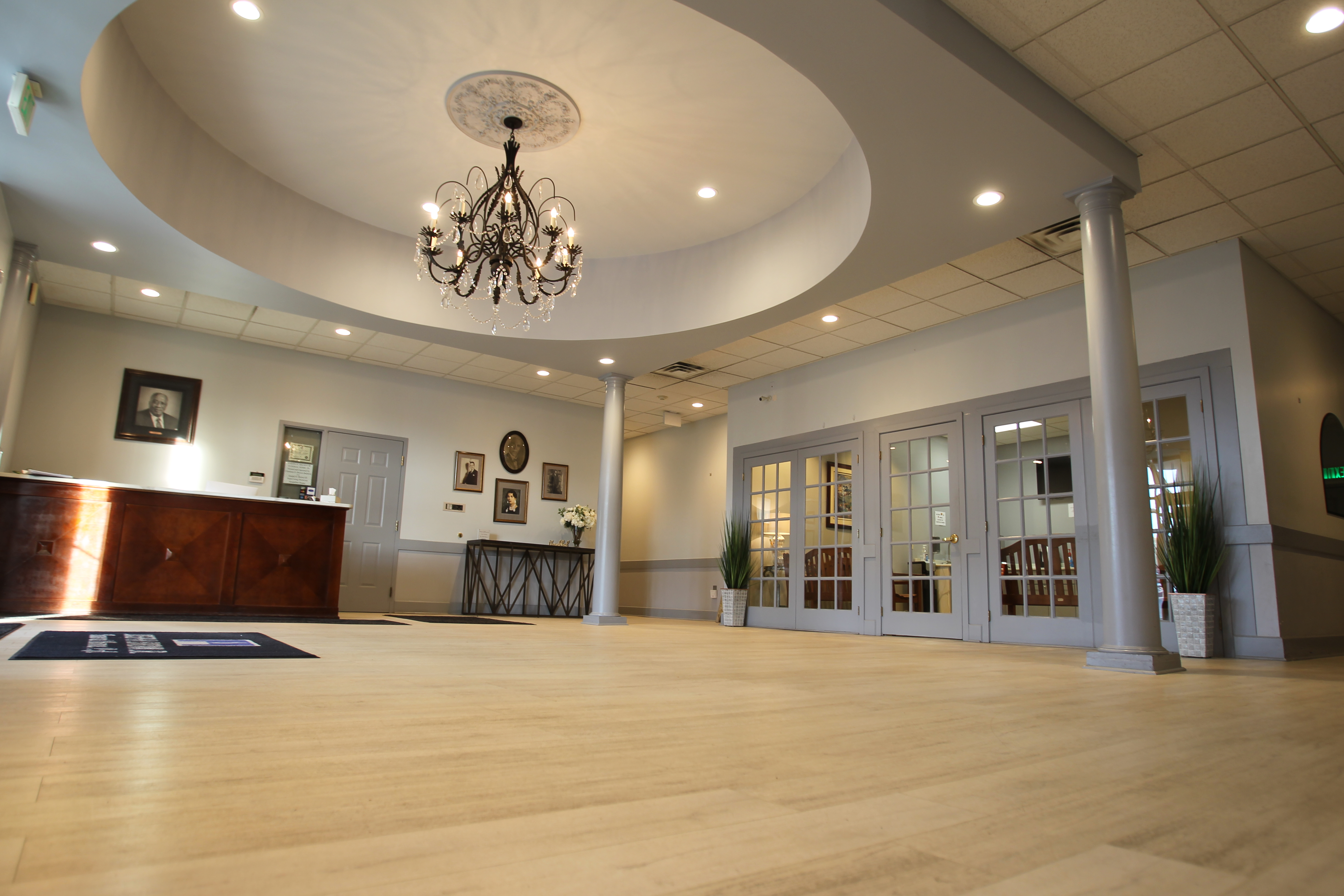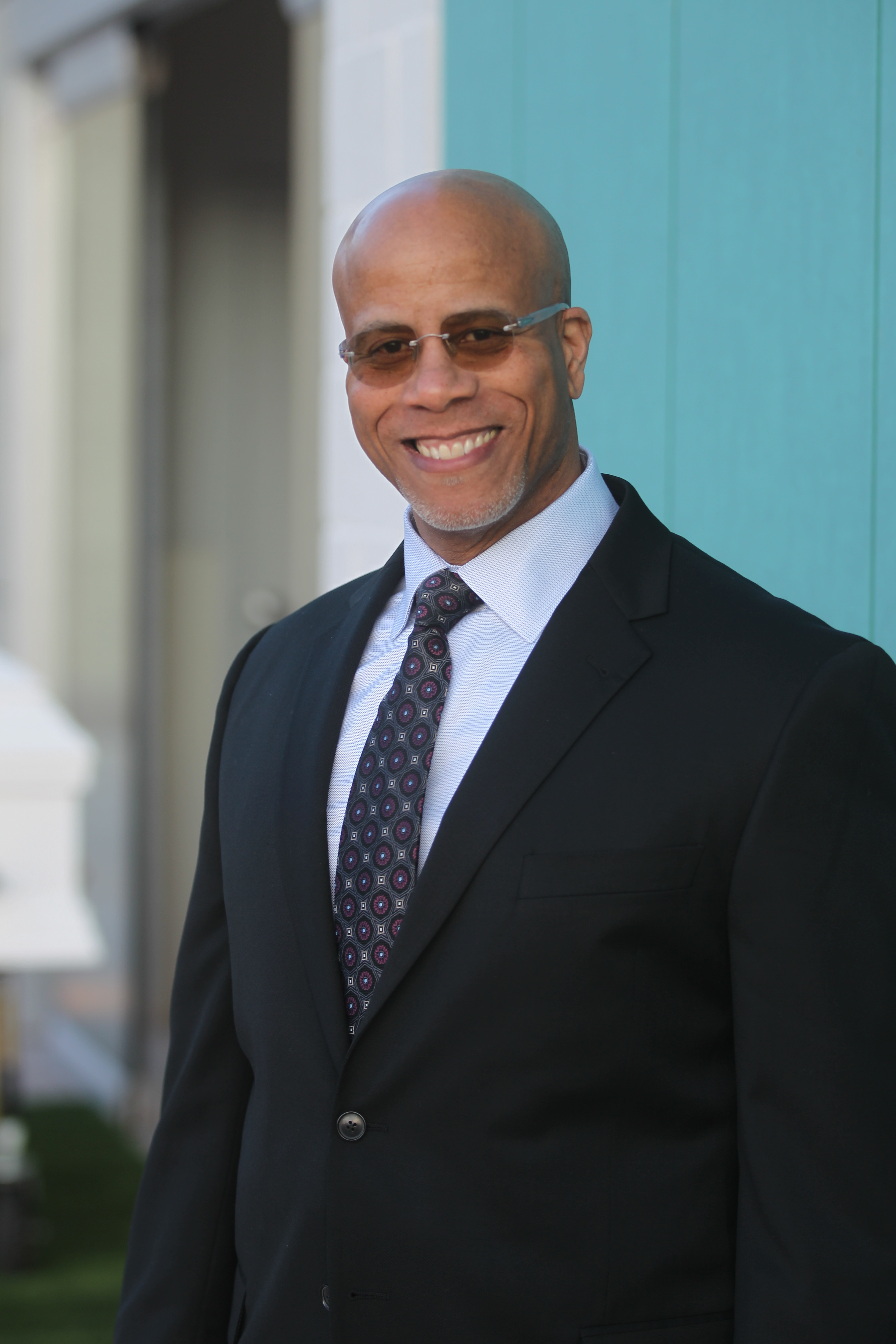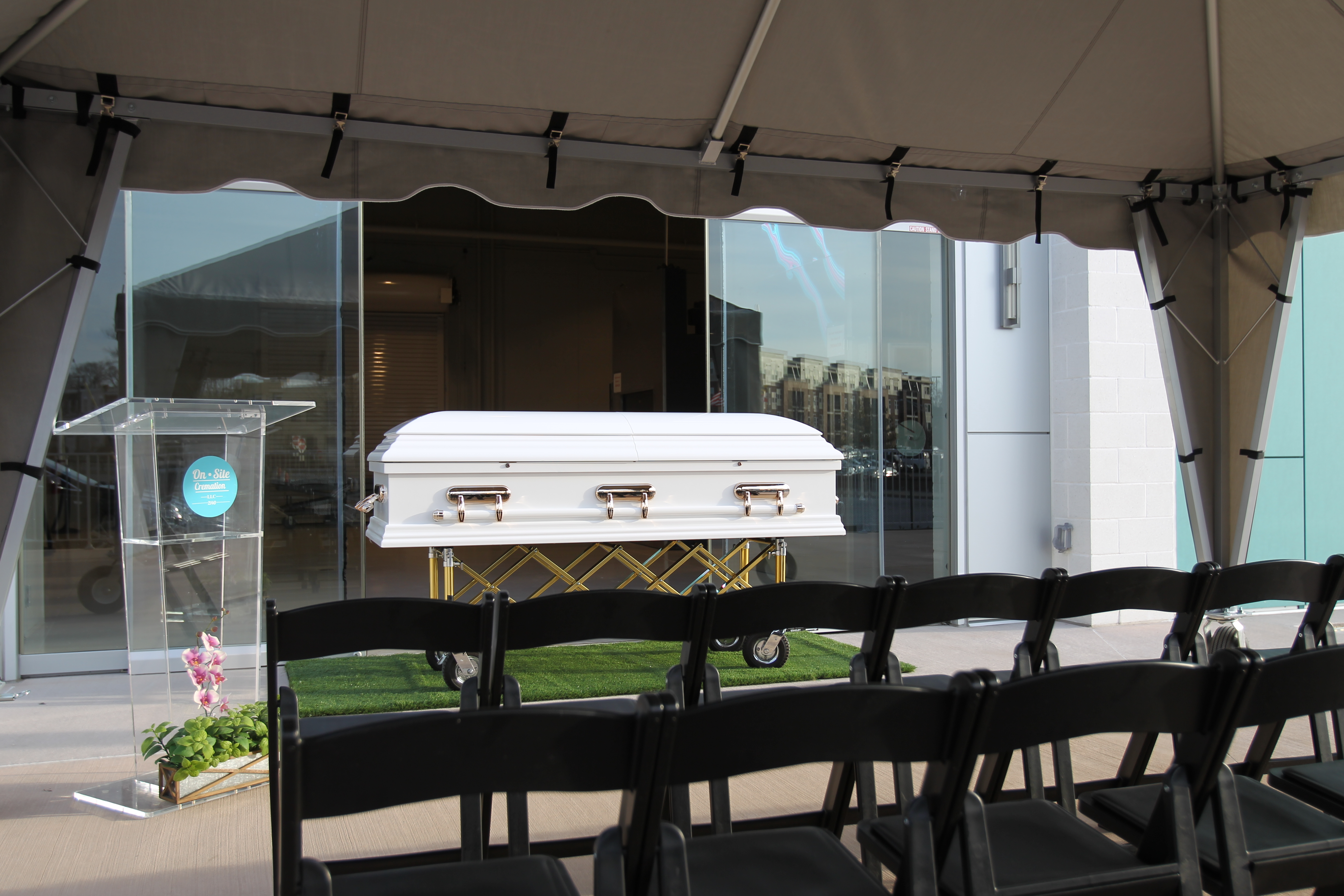This article originally appeared in the March 2020 issue of Southern Calls
By: Todd Harra
Photos by: Jason Weil and courtesy of Southern Calls

“The impediment of action becomes action. What stands in the way becomes the way,” says Joseph H. Brown, III, quoting Marcus Aurelius. Joe laughs ironically because he doesn’t allow anything to stand in the way of his vision.
When Joe couldn’t secure financing during the recession to build a crematory, he leaned a ladder against the side of his funeral home and climbed onto the roof. Setting the choke on his chainsaw, he pulled the cord and plunged the blade into the roofing membrane to cut out the stack hole. Then, Joe rallied members of his community to help him finish installing a 15 ton newly purchased—and self-financed—B&L Phoenix II. And that was just the beginning.
The Brown family has been caring for Baltimore’s dead for generations. “I’m a fourth-generation undertaker,” Joe offers. He’s quick to add, “but first-generation cremationist.” The founder of the undertaking dynasty, Isaiah L. Brown, Sr., was born in 1860. A carpenter and livery owner by trade, he began burying the people in his South Baltimore neighborhood in 1896, running his undertaking establishment, Isaiah L. Brown and Sons Funeral Home, out of his modest Montgomery Street rowhome. His sons, Isaiah, Jr. and Roland took over the business, and ran it until their nephew, Joseph H. Brown, Jr. came onboard after returning from the Korean War. Joe, Jr. attended the American Academy in New York. After taking over the business from Roland, he opened the newly minted Joseph H. Brown, Jr. Funeral Home in 1973 in the 1900 Block of West Baltimore Street in West Baltimore. Joe, III remembers, “My dad was very proud of our new location. I was 13 at the time, and I was proud for him.”
The new location was four stories above ground with the prep room in the basement. Joe, Jr. purchased the vacant lot next door and built an adjoining chapel. “But it was still a rowhome,” Joe recalls. “There was no parking. We had to double park cars in the street for a funeral, and to get a body into the chapel we had to put it in the hearse and drive it around the block.” The location served Joe, Jr. well, but seeing the need for additional growth he bought their current facility in 1996 at 2140 N. Fulton Street near Druid Hill Park. The move proved prescient and the funeral home now boasts the largest facility in Baltimore, sitting on 2.6 acres with 38,000 square feet spread over three buildings and ample parking—a rarity for a city funeral home. The main building features two chapels, the larger seating over 400 people and the smaller 100.

The path to funeral service wasn’t a linear one for Joe. He enlisted in the Navy and served for 11 years as a WestPac sailor in the South Pacific. “I loved it. The navy enabled me to see the world,” he says, pride evident in his voice. “I thought I’d do that forever.” But caring for the dead is in his bones, and Joe found himself drawn to return to the family business. Stateside, stationed at the Washington Navy Yard, Joe attended UDC, earning a degree in mortuary science. After an honorable discharge as an HM1 (petty officer first class designation for a corpsman), Joe returned to his father’s side to serve the people of West Baltimore.
Joe, Jr. died in 2000 and, Joe III took the mantle, along with his sister Charlene D. Brown Baldwin. “It was about the time my father died that I started really thinking about cremation,” says Joe. “I didn’t want to be part of the do-nothing generation and just ride my father’s coattails, and it became clear to me that cremation was the ticket.”
Joe, who has an athletic build, moves and talks with the energy of someone two decades younger than his 60 years. He also has an unusual collection: Japanese Maple trees The number of different types is staggering. There is the Coonara Pygmy, Green Cascade, Hogyoku, Beni Kawa, and a couple that sound vaguely mortuary themed like Bloodgood and Dissectum Atropurpureum. Joe has over 200 trees in his collection. “It’s about availability,” he says. “Some of my trees are easier to get than others.” And that’s the way he views the choice of disposition in his community. “It wasn’t available. I decided to make it available—make it easier to get.”

Historically, African-American communities have continued to favor traditional inhumation despite the national trend of consumers choosing cremation. “My community was hit hard by the recession [of 2008] and folks were struggling financially. As a result, their sense of value evolved. I saw it as an opportunity to offer my community an alternative.” Even in good economic times, Joe’s community still has its struggles. The median household income in Baltimore is $11,000 lower than that of the average US household. This led to a room full of bankers at the funeral home on December 14, 2007, where Joe pitched his grand idea of a “ceremonial crematory.” The bankers were intrigued, but shortly thereafter the bottom fell out of the market, and Joe found himself on the roof with a chainsaw.
But Joe doesn’t simply want to make cremation “easier to get.” He envisions creating a new tradition where cremation ceremonies have as much—if not more—meaning than the traditional embalm and bury model. He envisions returning to cremation some of the grandeur it possessed in antiquity. During the Republic in Rome cremation was the preferred method of disposition.There was pomp and ceremony surrounding the cremation rites. The funeral pyre was crafted asVirgil describes in the *Aeneid,*“…they reared a vast pyre, rich with pine wood and cleft oak whose sides they interweave with dark leaves, and place funereal cypresses in front and deck it above with gleaming arms.” There was a procession, or pompa, led by trumpeters and pipers, as the decedent was conveyed from their home to the pyre. The pyre was anointed with essential oils and spices before it was lit, and after the body was consumed the embers were doused with wine by the family.
“I’ve taken cremation out of the garage,” Joe says, referring to his new $2 million dollar “Cremation Plaza.”

Completed in July of 2019, the Cremation Plaza changes the paradigm. For 10 years, beginning in 2009 when he installed his first B&L unit, Joe found marketing cremation tough, despite it being a cheaper alternative to burial. “The first few years we did just a few cremations, and I mean *a few.*Things weren’t looking good, as far as my idea to put a crematory in. My sister told me, ‘You better make something happen.’” So, Joe took to the airwaves of Baltimore with the tagline “Shouldn’t you be there?”
“Tradition is tradition simply because it’s been that way for so long. I was aggressively marketing cremation on the radio essentially telling my community that it was okay to choose it.”
And wouldn’t you know, the phone started to ring with families inquiring about cremation.
As the popularity of Joe’s unique brand of cremation took root the idea of the plaza grew.
The seedling idea for the plaza design came from *Dwell*magazine, a publication that melds design and technology. Joe exchanged emails with a contributor, Jason Danziger, in 2002 about how much he liked a Berlin crematorium’s design. Danziger’s response was, “It’s close to where I live. If you come to Germany I can give you a tour.” Joe immediately got on the phone to his mother, Helen C. Brown—who is celebrating her 90th birthday this year—and said, “Mom, I’m going to see a crematorium in Berlin. Want to come?”
“Sure,” she replied. “When are we leaving?”
“Tomorrow.”
It proved to be a fruitful excursion. After Joe proved that ceremonial cremation could be profitable in the urban setting of West Baltimore, he finally secured funding for his dream project and broke ground in the late summer of 2018. The project took 10 months to complete and looks very much like what Joe envisioned a decade-and-a-half prior. The architecture blends orthogonal and material-based design—an imposing concrete and glass edifice with clean lines—that could easily grace the pages of a future issue of Dwell.
However, the beauty of Joe’s Cremation Plaza is only part of its elegance, it’s the functionality of the space that’s truly magnificent.
“Traditionally, cremation families have trouble leaving,” Joe explained. “It’s because there’s no destination.”
The Cremation Plaza gives them that destination.
The concept of the plaza is simple and elegant in that it dovetails in the traditions people already know—those of the cemetery. After a funeral service, the staff blocks off a road that leads down the middle of the funeral home campus. The pallbearers escort the casket up the road, followed by the mourners, to where the road terminates in front of the crematorium. Joes says the corteges are reminiscent of a New Orleans Jazz funeral, complete with music and scripture readings.

The 5,000 square foot crematorium, containing two brand new B&L Phoenix II with front clean-outs, is a modern facility that more resembles a scientific laboratory than a device for conflagrating the dead. In front of the 16-foot glass doors, the staff set up a cemetery tent and fill it with chairs, more than one would find at a typical grave site. After the minister says the committal, Joe presses a button. The curtain rises, the glass doors opening to reveal the retort and what Joe has dubbed “the push team.” The push team, wearing matching lab coats and gloves, moves in a choreographed manner, placing the decedent into the retort the same way pallbearers place a casket onto a lowering device at the cemetery. With this the minister says, “Let us pray” and the curtain is slowly lowered. The inside of the crematorium is fitted with colored theater lights to make the committal even more dramatic, and as Joe presented Make Cremation Great Again at a recent NFDA cremation event, he wants to use dramatic flair to give cremation the pomp it had in antiquity.
Mike Nicodemus, Vice President of Cremation Services for NFDA witnessed one of Brown Funeral Home’s cremation services recently and said, “I was so impressed with what he [Joe] is doing with cremation. The community has bought into his philosophy that we need to have some sort of closure rather than just picking the body up and cremating it.” Mike paused and then added, “Joe is certainly changing the face of cremation in his area.”

Joe’s area is urban, something he embraces having grown up in Baltimore and done business there all his life. “I say we’re ‘urban deathcare specialists.’” And to arrive at the facility there’s no doubt Joseph H. Brown, Jr. Funeral Home sits in the heart of an urban setting. Across the street is a Baptist church the size of a city block. On the other side of the campus is an auto repair shop and fried chicken eatery. Caddy corner is a lounge. Rowhomes and concrete surround the rest of the funeral home. In addition to economic struggles, the Western District, made famous in the hit HBO show The Wire, continues to be plagued with violence. Out of the 348 homicides in Baltimore in 2019, 53 were shootings in the Western. Sure, the funeral home staff deals in the human misery the violence begets, but Joe sees it as an opportunity to serve the people of his communityand provide a fitting send off. Quoting the pastor of the church across the street, Joe tells me, “He said you have to be where the people are.” Then he laughs one of his booming laughs. “I like to quote Field of Dreams, ‘If you build it…’” He lets it hang. And they do come; Joseph H. Brown, Jr. serves over 1,000 families each year, many of them now choosing cremation. They’re doing so because Joe has made it available and is educating them on their choices.
“I want people to know the when, the where, and the how of cremation,” Joe says.
The community trusts Joe and his cremation evangelizing because not only are Joe and his family business owners in West Baltimore, they’re part of the community and give back. Every year the funeral home hosts a back to school party with pony rides, a bounce house and live entertainment where the staff hands out backpacks filled with school supplies. At Thanksgiving Joe and his staff give out turkeys and other holiday food staples to families in need, and at Christmas the funeral home organizes a coat drive benefitting the youths in the neighborhood.
I asked Joe if there was any neighborhood pushback when he went before the zoning board proposing to put in a crematory. Oftentimes crematories run up against the “not in my neighborhood” opposition when going into a residential area. Joe’s response, “Not a single person spoke out against it. My family is a part of this community, and I employ 20 people who live here. They want us here.”
And while Joe’s crematorium has been well received in West Baltimore, he’s finding there are other ancillary benefits to his new tradition.
Joe recently encountered a woman at a funeral who said “You weren’t my first choice of mortician.” In response to his raised eyebrows, she continued, “But I wanted to make sure the ashes I got back were that of my husband so I went with you.” He laughed. This time there isn’t a trace of irony. “Proves I must be doing something right.”
*Statistics courtesy of the Centers for Disease Control and Baltimore Sun.
